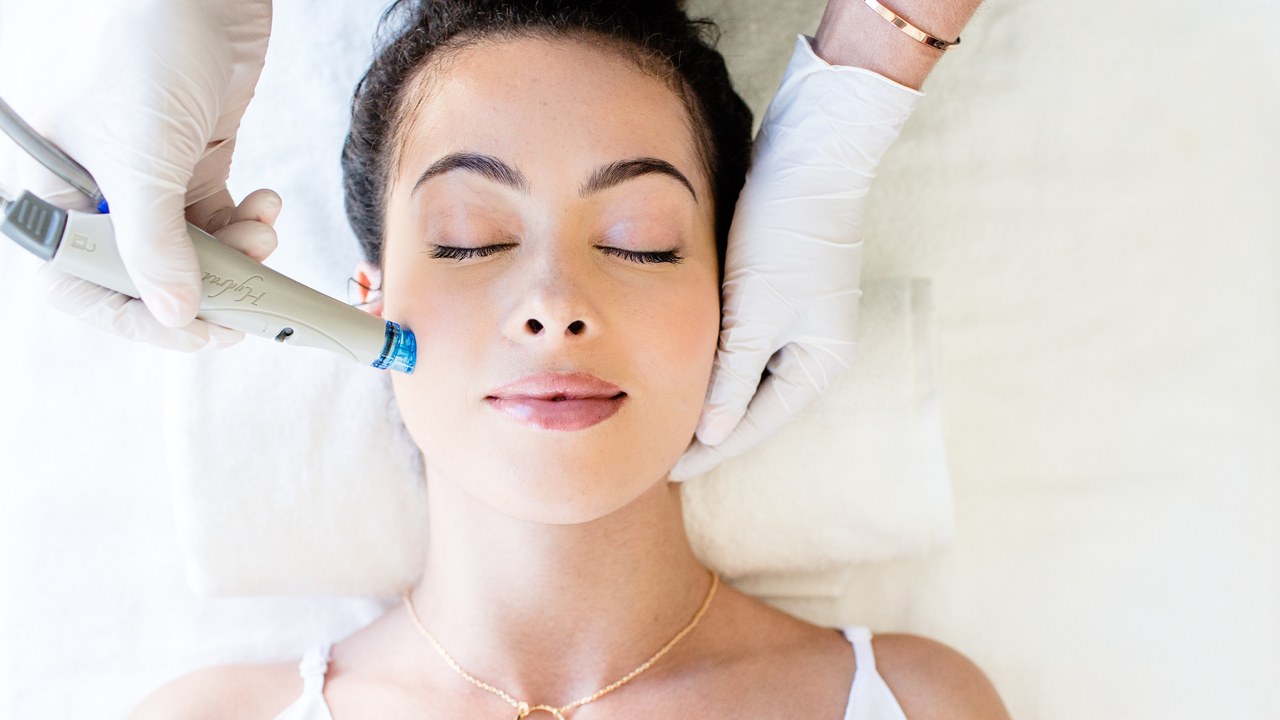I Got a HydraFacial and It Totally Changed My Skin

A few months ago, I met a friend for dinner. “Your skin looks amazing,” I said, leaning closer. It looked radiant and freakishly smooth, like that of J.Lo at two months old.
“I got the HydraFacial,” she replied.
I was sold on the spot. What also intrigued me was that it doesn’t hurt. My pain threshold is lower than the Mariana Trench. (I whined for a full half hour after getting the flu shot.) You’re not going to find me signing up for a fractionated laser session anytime soon, which is why a treatment that could deliver results without me breaking into a cold sweat has obvious appeal. Where do I sign up?
For those unfamiliar, the HydraFacial is essentially a peel, microdermabrasion, and hydrating mask in one. But unlike the facials an aesthetician would usually perform by hand, it’s done using a medical-grade device that pulls debris out of your pores, while also moisturizing and exfoliating. (You’ve probably heard of some variations of it called a “pore vacuum.”)
It can treat just about any skin condition, which is ideal as I’ve been feuding with a forehead breakout for months now. “What I love about HydraFacial is how customizable it is to each patient’s unique skin concerns,” says Deanne Robinson, M.D., the co-founder and president of Modern Dermatology in Westport, Connecticut, and member of The Women’s Dermatologic Society. “It’s a great treatment for all ages and skin types, from oily, acne-prone teenagers to more mature skin battling fine lines and pigmentation problems.” The only exceptions to this are an active rash, sunburn, or rosacea flare-up, she notes.
“Every patient benefits because it’s not only using targeted serums to help with hydration and breakouts and pores, but it’s also doing a vortex fusion of exfoliation and sucking out the dead skin,” says Graceanne Svendsen, the senior aesthetician at New York’s Shafer Plastic Surgery & Laser Center. She finds the treatment especially valuable during the change between seasons as well as before weddings, since it’s like giving your skin a hard reset.
There’s nothing spa-like about the experience, so don’t expect to hear Enya or fall asleep on the bed. Instead, the HydraFacial device is a huge machine with various attachments that whirr and suck and spin. First, Svendsen cleansed my skin twice, because the foundation I’ve been wearing is apparently comedogenic (meaning it clogs pores). The first was a foamy cleanser, which she then followed with a vitamin C enzyme mask. “The enzymes open up your pores to help release the makeup so I can get your makeup off, and the hydration is going to keep it from over-drying your skin,” she told me. (Yes, I have switched foundations since.)
Once my skin was clean for what must have been the first time since birth, Svendsen embarked on the hydro-dermabrasion portion of the treatment—which is, essentially, hydration plus the microdermabrasion-style exfoliation. “It spins serums out [of the device] and drags in dead skin,” she says. The first is what she calls a “deep pore-cleansing step,” in which she used a small wand to sort of scrape my skin—going lightly over problem areas. Then she buffered back over everywhere with a serum.
The next step is a gentle acid peel, with 7.5% glycolic acid and 2.5% salicylic acid. As a glycolic acid stan, I was delighted to feel the familiar tingle.
Afterward, Svendsen used the device to do extractions. Unlike the medieval torture of typical extractions, the HydraFacial method uses the wand, but with a new attachment, to suction gunk out of your pores. It felt so good; I wish I could hold it over every single one of my zits like a face vacuum. This suctioning action is multifaceted: It not only removes grime, but also boost circulation and stimulates the lymph system, which removes toxins from your face.
